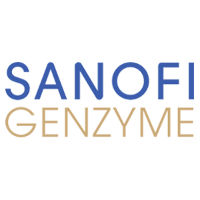预约演示
更新于:2025-05-24
Delmitide
更新于:2025-05-24
概要
基本信息
原研机构 |
在研机构- |
最高研发阶段终止临床2期 |
首次获批日期- |
最高研发阶段(中国)- |
特殊审评- |
登录后查看时间轴
结构/序列
分子式C59H105N17O11 |
InChIKeySFGFYNXPJMOUHK-PKAFTLKUSA-N |
CAS号287096-87-1 |
Sequence Code 14392555

研发状态
10 条进展最快的记录, 后查看更多信息
登录
| 适应症 | 最高研发状态 | 国家/地区 | 公司 | 日期 |
|---|---|---|---|---|
| 溃疡性结肠炎 | 临床2期 | 捷克 | 2005-04-25 | |
| 克罗恩病 | 临床2期 | 欧洲 | - | - |
| 克罗恩病 | 临床2期 | - | - | |
| 克罗恩病 | 临床2期 | - | - | |
| 腹泻 | 临床1期 | 美国 | - | - |
| 巴雷特食管 | 临床前 | 美国 | - | - |
| 心脏移植排斥反应 | 临床前 | 美国 | - | - |
| 心脏移植排斥反应 | 临床前 | 法国 | - | |
| 化疗引起的损伤 | 临床前 | 美国 | - | - |
| 间质性膀胱炎 | 临床前 | 美国 | - | - |
登录后查看更多信息
临床结果
临床结果
适应症
分期
评价
查看全部结果
登录后查看更多信息
转化医学
使用我们的转化医学数据加速您的研究。
登录
或

药物交易
使用我们的药物交易数据加速您的研究。
登录
或

核心专利
使用我们的核心专利数据促进您的研究。
登录
或

临床分析
紧跟全球注册中心的最新临床试验。
登录
或

批准
利用最新的监管批准信息加速您的研究。
登录
或

生物类似药
生物类似药在不同国家/地区的竞争态势。请注意临床1/2期并入临床2期,临床2/3期并入临床3期
登录
或

特殊审评
只需点击几下即可了解关键药物信息。
登录
或

生物医药百科问答
全新生物医药AI Agent 覆盖科研全链路,让突破性发现快人一步
立即开始免费试用!
智慧芽新药情报库是智慧芽专为生命科学人士构建的基于AI的创新药情报平台,助您全方位提升您的研发与决策效率。
立即开始数据试用!
智慧芽新药库数据也通过智慧芽数据服务平台,以API或者数据包形式对外开放,助您更加充分利用智慧芽新药情报信息。
生物序列数据库
生物药研发创新
免费使用
化学结构数据库
小分子化药研发创新
免费使用

